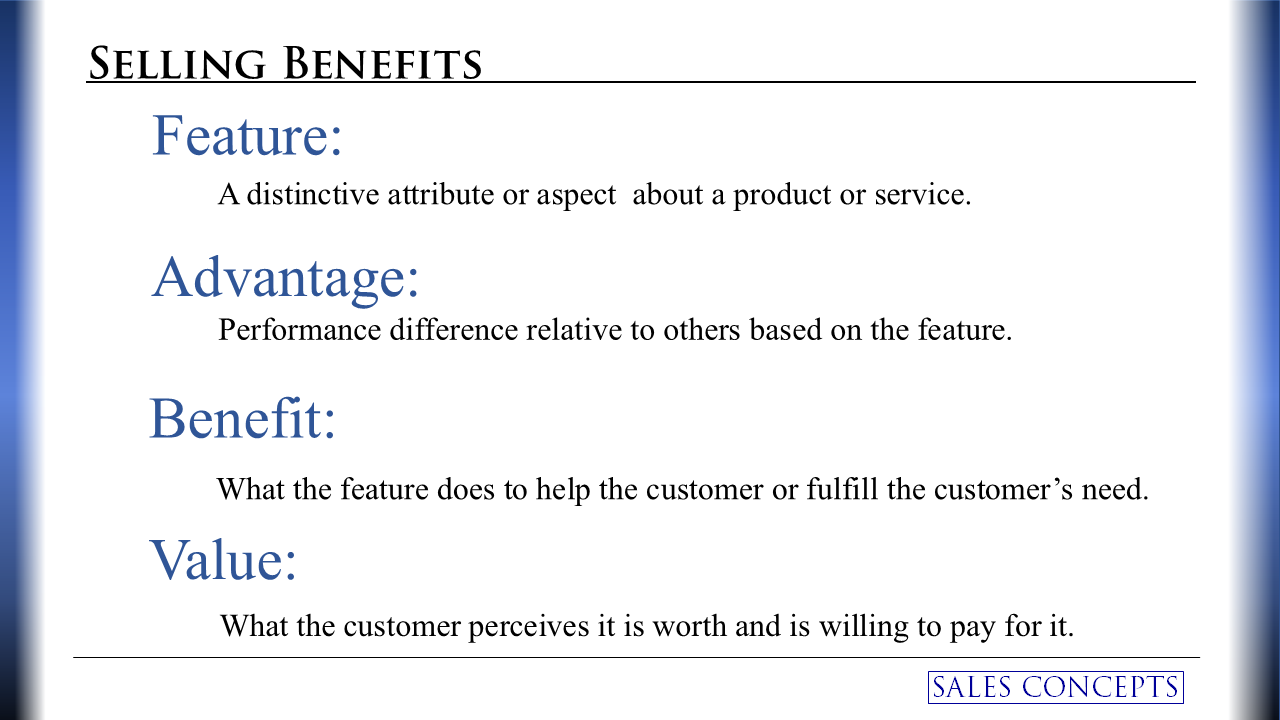Sell value! Position Your Solutions as Investments, Not Expenses.
It is easy to fall into the trap of focusing on product specifications, technical details, or a laundry list of features. After all, salespeople know their solutions inside and out, and it can feel natural to want to share everything. But customers do not buy features. They do not even buy advantages. What they buy, what they genuinely care about, is value. And value only becomes clear when you connect the dots between features, advantages, benefits, and what the outcomes that matter most to them are worth. Remember, features create advantages, advantages create unique benefits, and unique benefits create value. Value is what your customers buy.
Features are aspects of your product or service. For example, if you sell equipment, a feature might be a digital control panel or a higher-capacity fuel tank. These are important, but on their own, features rarely inspire a buying decision.
In fact, focusing too heavily on features risks overwhelming the buyer with data while leaving them unclear about why those features matter to their business. That is why features are only a small part of the conversation.
Advantages explain how a specific feature is superior compared to alternatives. If your equipment has a digital control panel, the advantage might be that it allows for more precise settings than manual dials.
Advantages begin to frame your product in a competitive light. They answer the question, Why should I choose this instead of something else? But while advantages help set you apart, they still do not go deep enough to influence the emotional and financial drivers of a business decision.
Benefits translate advantages into meaningful outcomes for the customer. They make it personal.
Consider the digital control panel again. The advantage is precision, the benefit is fewer mistakes, less rework, and ultimately more productivity, which means more money made or saved for your customer.
When sales professionals articulate benefits, they shift the conversation from what our product is to what your business gains. This is where prospects start leaning in, because the dialogue now focuses on their world, not yours.
Value is the highest level of this progression. It is not just about a benefit. It is about the total impact on your customer’s business goals. Value answers the question, How does this solution align with what we care about most?
For example, the shop owner is not buying a control panel. They are buying reduced scrap, which improves profitability and provides greater consistency for their customers.
When you communicate value effectively, you make it clear that your solution is an investment, not an expense. And that is what closes deals.
Think of features, advantages, benefits, and value as a ladder. Each rung gets you closer to the buyer’s true decision-making criteria. If you stop at features or advantages, you are leaving the conversation incomplete. If you focus on value, you demonstrate to customers that you understand not only their operations but also their priorities and key success metrics.
The best sales professionals discipline themselves to translate every feature into an advantage, every advantage into a benefit, and every benefit into measurable value. It takes practice, but it’s the difference between being a product rep and a trusted advisor.
So ask yourself the following questions.
- When you present your solution, do you stop at features and advantages, or do you consistently translate them into benefits and value?
- How clearly can you connect the benefits of your product or service to your customer’s strategic business objectives?
- What steps can you take to refine your messaging so that buyers see your solution as an investment delivering measurable value, rather than just a cost?

